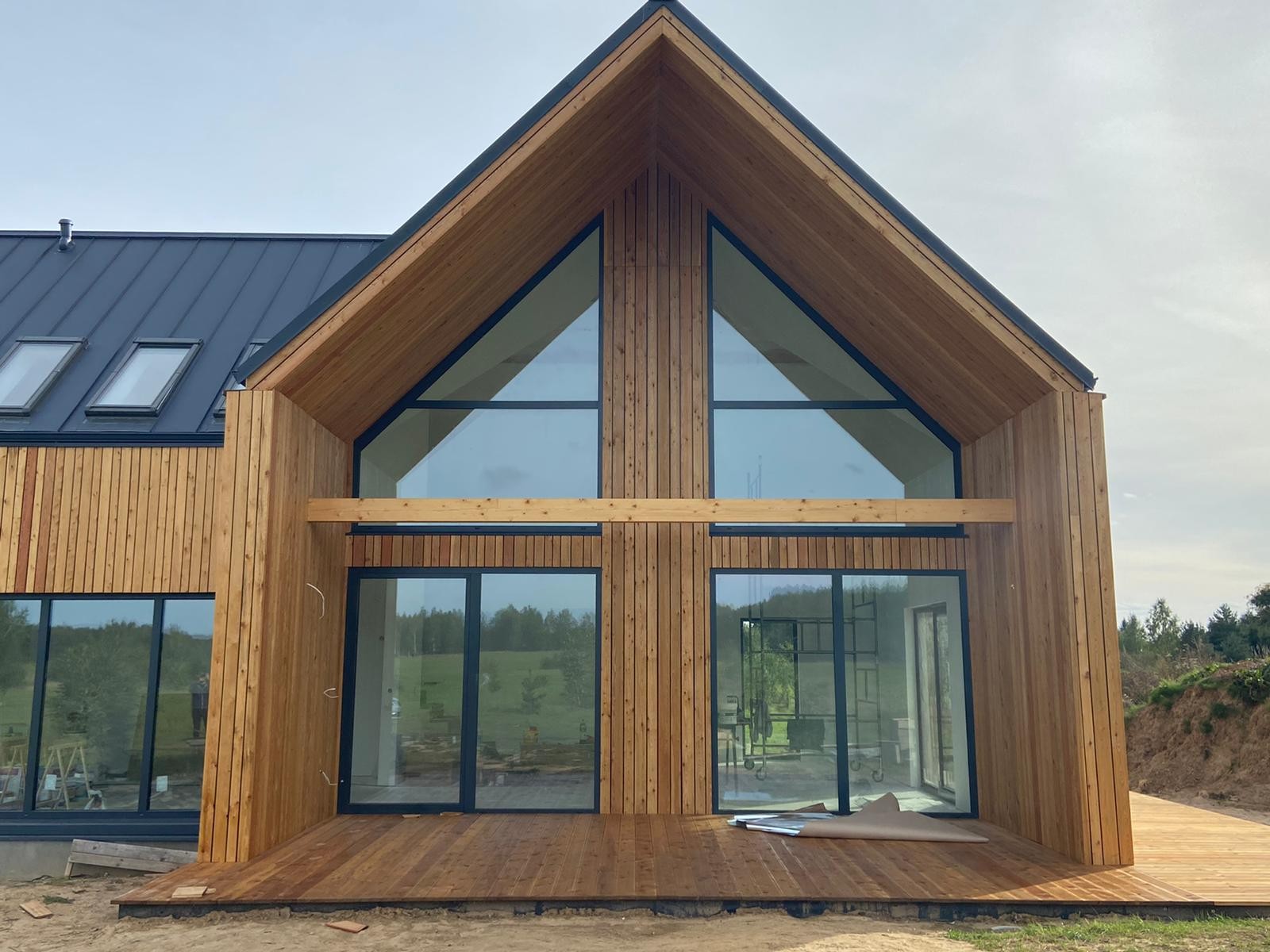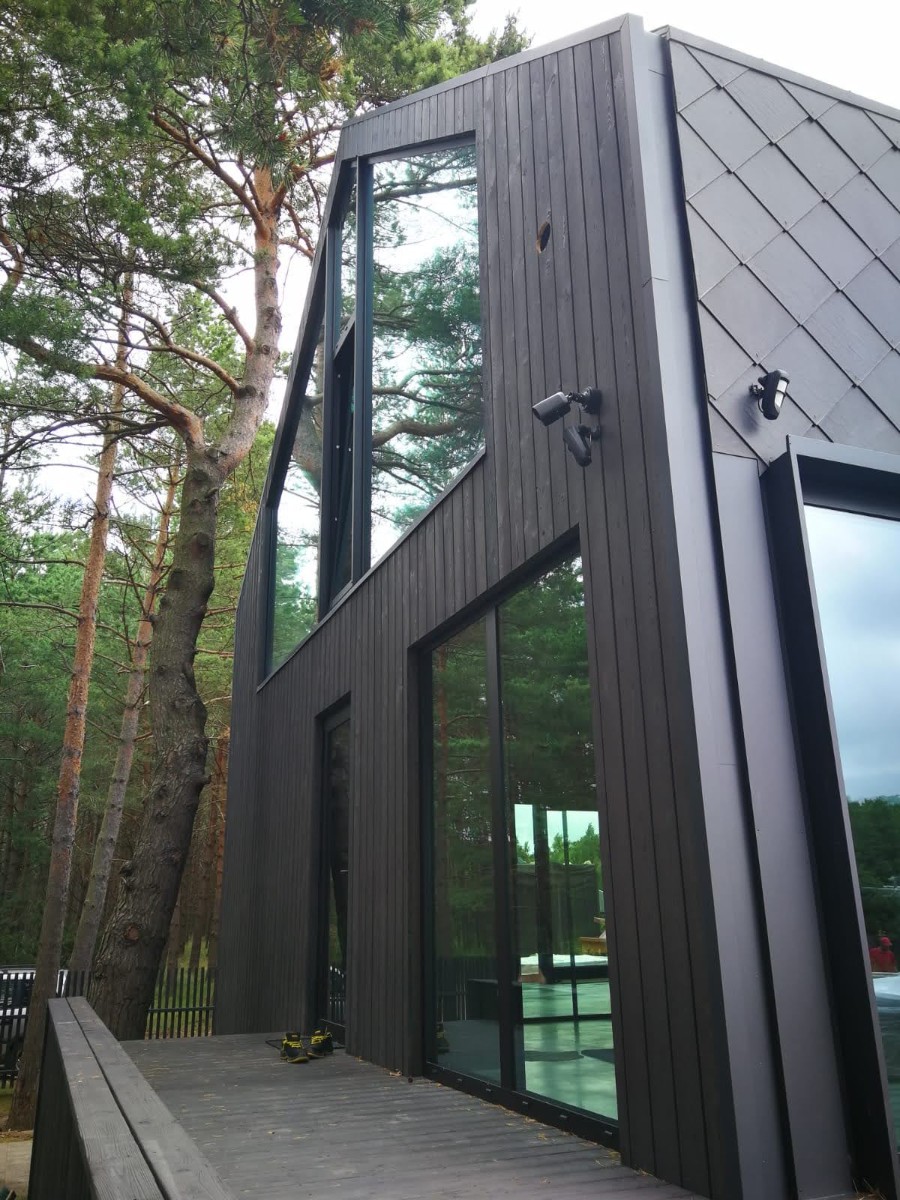Wood Siding: Pros and Cons
Some say it’s what’s inside that matters the most. However, when it comes to architecture and design, everybody gushes over a good exterior. Your facade is what will determine how your guests and neighbors perceive your house. It’ll also attract potential homebuyers. That’s why it’s vital to keep it looking its best at all times. After all, you only get one opportunity to make a great first impression!

If you’ve been thinking of giving your home a makeover, there’s a simple yet effective solution. You don’t need to resort to an invasive renovation. All you have to do is invest in new siding. There are many options in the market for all tastes and budgets. You’ll find vinyl, composite, PVC, and more! However, all these cheap materials imitate the texture of a far superior one. We’re talking about wood.
Table of Content
- Wood Siding Pros
- 1. Wide Variety of Styles
- 2. Customization
- 3. Sustainability
- 4. Durability
- 5. Diversity
- 6. Value
- Shou Sugi Ban
- Wood Cladding Cons
- 1. Vermin
- 2. Pricing
- 3. Maintenance
- Where to Get Charred Wood Cladding?
Timber has been the most popular material for facade design for centuries. It’s been around since the beginning of home-building as we know it. Homeowners from all corners of the world are quick to fall in love with its natural beauty and timeless appearance. Its versatility can give your house any look you’re going for, from cozy and rustic to modern and high-class.
However, we are well aware that replacing your cladding is a significant investment. That’s why you must never take the decision lightly. You need to look at every angle before you commit. That said, we’ll enlist the main advantages and disadvantages of choosing a wooden siding.
Wood Siding Pros
Picking the right material for siding is an important decision. After all, it can completely define the character of your building. Wood cladding is a practical and stylish alternative to enhance your overall facade aesthetics. But there are so many more pros to it. Here are some excellent reasons why timber siding is an all-time-favorite:
1. Wide Variety of Styles
The sky is the limit when outlining your ideal facade. There are lots of installation techniques to choose from. You can go for a classic overlapped design or mix horizontal and vertical boards to create a unique pattern. These are the most popular styles for wood cladding:

- Lap Siding: Also known as bevel or clapboard cladding. This traditional style consists of overlapping the boards, starting from the bottom and up. It’s vastly used because of its ability to discard water, as it has no edges that will hold any liquid.
- Drop Channel Siding: This setup is highly popular for cabins. It consists of milling down one long edge of the plank so that it’s significantly narrower than the rest of it. The opposite long edge must have a small dent to match with its counterpart like puzzle pieces when doing the paneling.
- Tongue-and-Groove Siding: It gets its name from the tongue and the groove carved from the plank’s edges. These features help fit the pieces together when installing the cladding.
- Split Log Siding: It uses boards that are flat on one side and rounded on the other. It has a beautiful finish since the wood is sawed in a way that preserves its natural bark.
- Board-and-Batten Siding: This cladding requires a vertical installation. It intercalates wide boards and narrow strips of timber. This style allows for proper wood expansion and contraction.
- Shingle Siding: Typically used for roofs, wood shingles are also popular for facade cladding. These thin, tapered pieces of timber provide a beautiful look to any exterior.
2. Customization
You can always stain or paint your timber cladding to fit your vision. There are limitless alternatives when it comes to colors and finishes. You need to pick the right siding varnish to make sure your facade will look freshly stained for longer. Choosing your favorite hue will make your home stand out from the crowd. The best part is that if you get bored of the look, you can always paint it over and over again! Discover the variety of colors we offer for charred wood products.

3. Sustainability
Wood is by far the most environmentally friendly material available for exterior cladding. It is a renewable source, it’s 100% biodegradable, and it takes less energy to manufacture than plastic siding options. It’s safe for you and the planet since it doesn’t produce toxic fumes when exposed to the elements. It’s also entirely recyclable, reducing your carbon footprint while keeping your home looking great.
4. Durability
When properly taken care of, wood can last for ages. On top of that, it’s easy to repair as well! You can fill up any small holes or get a replacement for warped or damaged boards. Maintenance is relatively simple. All it takes is for you to clean the planks, brush them, and varnish them every so often. One of the most sustainable and lasting wood is Shou Sugi Ban. Read our article on how long does Shou Sugi Ban wood last to find out.
5. Diversity
There is a myriad of wood species to choose from, all of them with different characteristics to suit your particular needs. These are the preferred kinds of timber for siding purposes:
- Pine is the most popular softwood for siding. It has a beautiful color and pattern.
- Spruce shares many of the properties of pine. However, it comes in longer dimensions.
- Cedar is slightly more rigid than other softwoods, and it’s less likely to cup, split, or swell.
- Redwood has very little resin, so it easily soaks in stains and varnishes. It’s also resistant to rot and vermin.
- Cypress is incredibly durable, rot-resistant, and insect repellant. It is also lightweight in comparison to other species.
6. Value
This beautiful material is much more than meets the eye. Upgrading to timber cladding can undoubtedly add value to a home. It’ll make any building look high-end. If you’re looking to sell your house, consider installing a good-old wood siding to boost your gains.
Shou Sugi Ban
Even though this is not a new technique, it’s the hottest one in the wood siding world. And yes, we mean that quite literally. Originally from Japan, Shou Sugi Ban uses fire to make timber more durable. This unusual method, also called Yakisugi, also highlights the natural texture of the boards. Its distinct burnt wood finish has become a staple in modern architecture.

Fire is often associated with wood damage. However, this controversial technique is far from causing any destruction. Instead, it provides charred wood with extra strength and resistance against the elements. The flames render the planks almost indestructible. After the charring process, Shou Sugi Ban becomes weather-resistant and vermin-repellant. It’s the best alternative when thinking about wood cladding.
Wood Cladding Cons
Unless you’re a woodpecker, keeping up with timber can also have its downsides. It can potentially become quite costly and tiring. Before you start designing your dream facade, check out the cons of having wood cladding:
1. Vermin
Lumber naturally attracts all kinds of bugs and pests. The most popular ones are termites. However, you can prevent these critters from finding a new home in yours. An annual pest-control inspection should suffice to prevent any infestations.
2. Pricing
Depending on the style and the species of wood you select, timber cladding can get rather expensive. However, keep in mind that you’re getting what you pay for. Look at the cost of your wood siding as a smart investment. It’s a high-end material, so, as we mentioned before, it’ll significantly increase your home’s resale value. We’ve prepared a comprehensive review of wood siding cost, make sure to check it out!
3. Maintenance
Keeping up with damaged wood siding can become exhausting. That’s why prevention is crucial. Regular maintenance can keep any timber cladding related problems at bay. All you have to do is remove the dirt buildup once in a while and use a varnish or natural oil to keep your facade looking brand new.
Where to Get Charred Wood Cladding?
Degmeda provides high quality Shou Sugi Ban for all your cladding, flooring, decking, and fencing projects. In our catalog, you’ll find only the most popular species for Yakisugi. We sell Accoya, larch, pine, spruce, and the traditional cedar for your charred timber needs. We also provide wood charring services and worldwide shipping. Visit our website for more information!